Inspired by this other question, I created an animation (jsfiddle) that draws a circle, then a line that connects it to another circle. I read that D3 v3 doesn't need to listen the the end event to chain transitions.

The code below works, but how should I refactor it so it doesn't use end events?
var margin = {top: 40, bottom: 40, left: 40, right: 40},
width = 960 - margin.left - margin.right,
height = 500 - margin.bottom - margin.top;
var svg = d3.select("body").append("svg")
.attr("width", width + margin.left + margin.right)
.attr("height", height + margin.top + margin.bottom)
.append("g")
.attr("transform", "translate(" + margin.left + "," + margin.top + ")");
var t0 = svg.append("circle")
.attr("r", 0)
.attr("cx", 40)
.attr("cy", 40)
.attr("class", "point")
.transition()
.duration(500)
.attr("r", 4);
var t1 = t0.each("end", function(){
var t2 = svg.append("path")
.style("stroke", "#000")
.style("stroke-width", 2)
.style("fill", "none")
.attr("d", "M40,40L40,40")
.transition()
.ease("linear")
.duration(500)
.attr("d", "M40,40L80,80");
t2.each("end", function(){
svg.append("circle")
.attr("r", 1)
.attr("cx", 80)
.attr("cy", 80)
.attr("class", "point")
.transition()
.duration(500)
.attr("r", 4);
});
});